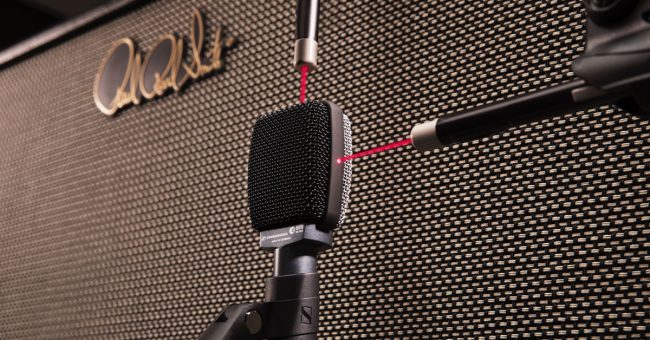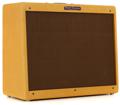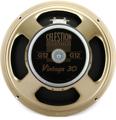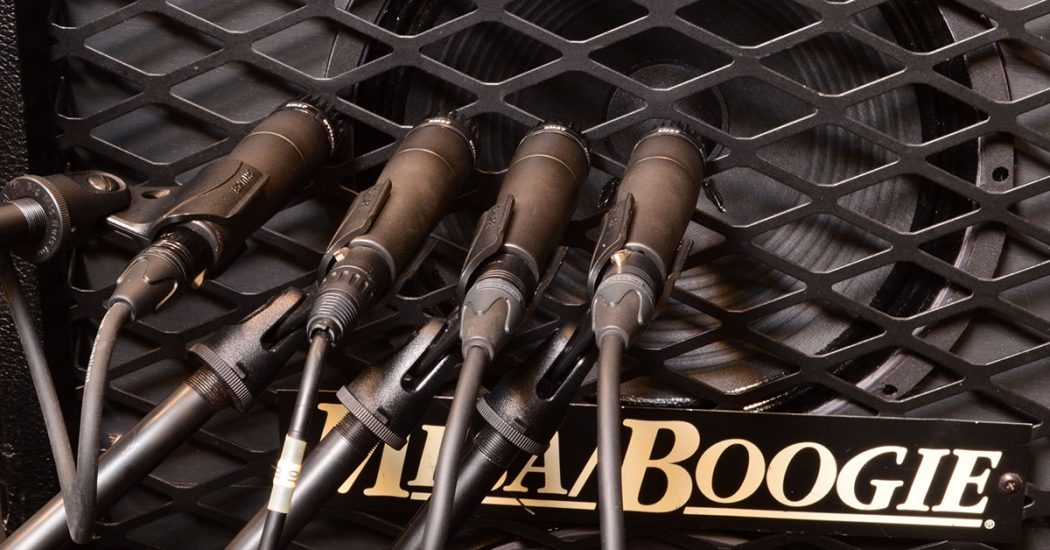
One of the least understood aspects of getting a great live guitar sound or great guitar recording is mic placement on a guitar amp. I know this because I frequently see people using bizarre techniques. I decided to write this article and add sound clips that will let you hear just how big a difference mic placement can make.
Mic Positioning on the Speaker
The importance of the mic position on the speaker cone is something many people clearly don’t grasp. The sound coming off the speaker cone changes drastically depending on where you put the mic. To show how drastic a difference there is, here is a frequency graph of two identical Shure SM57 mics on the same sound and same performance through the same speaker. Again, same sound, same speaker. The only difference is that the mics are positioned 4″ apart — one on the center of the cone and one near the edge of the cone. Take a look.
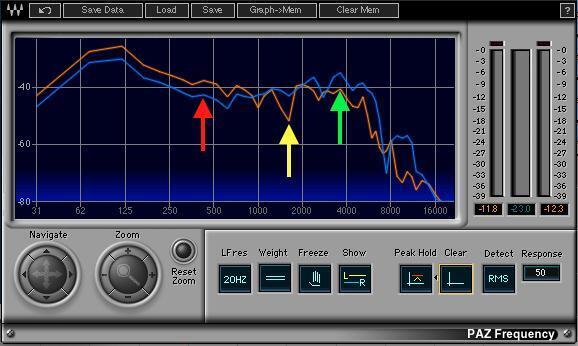
The blue trace is an SM57 on the center of the cone, while the red trace is an SM57 on the edge of the cone. The differences in frequency response between the two mic positions are clearly evident. The red arrows points to the -5dB difference below 500Hz, the yellow arrow indicates the huge 8dB difference at 1.6kHz, and the green arrow highlights the 6dB difference at 3.5kHz. The performance, the amp, the mic distance from the speaker — everything else is identical. These graphs were generated using the Waves PAZ Frequency plug-in.
To demonstrate the difference between mic positions, I grabbed four Shure SM57s and set them up in different positions across the front of a 12″ speaker. Let’s start by listening to a nonmusical source that makes the differences extremely obvious. The audio clip below is pink noise through the speaker at 102dB SPL (Sound Pressure Level) with the mics positioned as seen in the picture below. Listen to how different each mic position sounds. You will hear them in this order:
- 4 — Center
- 3 — Near Center
- 2 — Near Edge
- 1 — Edge
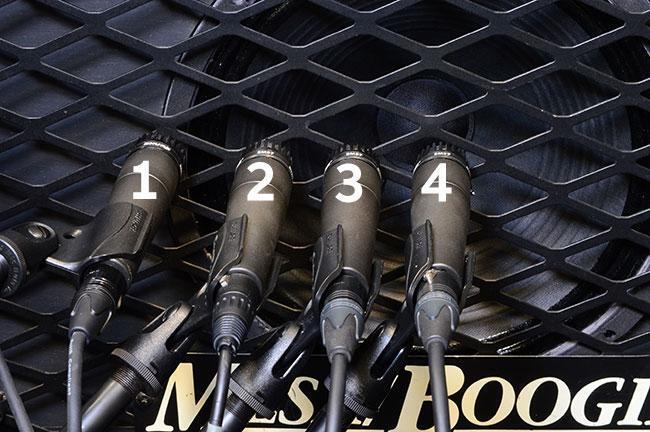
The differences are not subtle at all. You can hear the high frequencies diminish as you move off center of the cone, as the low frequencies increase. The tonal balance in the critical midrange also changes drastically.
For these recordings, I used my PRS 513 guitar (similar to the PRS 509) into a 40-watt Fender ’57 Custom Twin-Amp driving my own personal circa-1985 Mesa/Boogie cabinet (the one that I used on the road with the Oak Ridge Boys) loaded with two 12″ speakers that are voiced like Celestion Vintage 30s. I used this cabinet because of the metal-grate grille that makes it easier to see the mic placement on the speaker. I added a JHS Moonshine pedal for overdrive.
Don Carr
Here’s Don Carr playing one dirty guitar pass with the mics in the same positions seen above.
Mic 1
Mic 2
Mic 3
Mic 4
And here’s a clean guitar pass using exactly the same mic setup.
Mic 1
Mic 2
Mic 3
Mic 4
Distance from the Speaker
Another aspect of mic positioning on a guitar cabinet is distance from the speaker cone. I know that some people put mics 2′, 3′, or farther away from the cabinet; here are some audio clips that demonstrate how much difference even an inch can make. Here’s Don Carr playing one performance with the same mics at different distances, in 1″ increments as seen below.
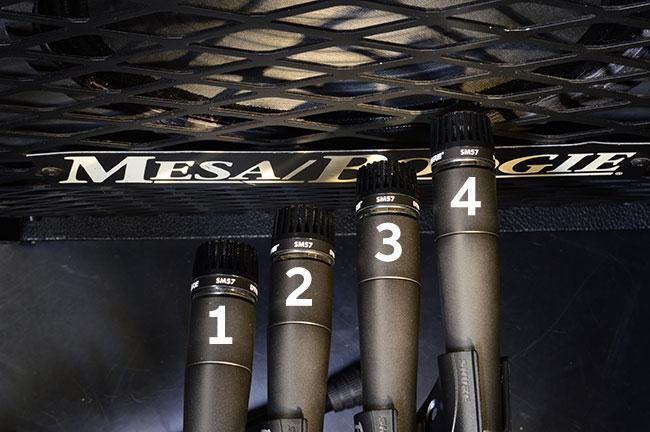
Mic 1
Mic 2
Mic 3
Mic 4
NOTE: I kept the placement on the speaker approximately the same by positioning the mics in an arc along the near-edge position (see image below).
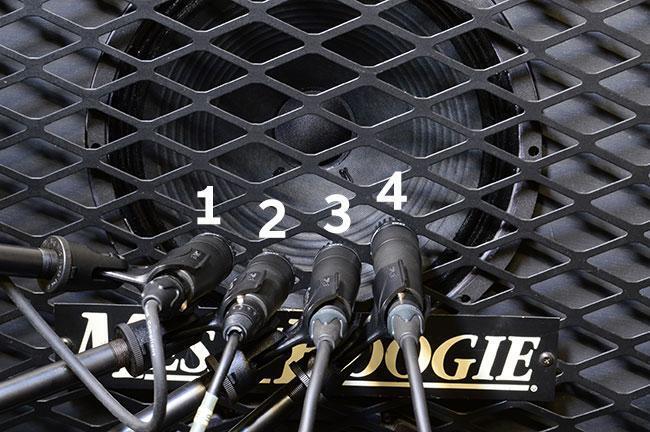
Off-axis from the Speaker
One common technique that I see in clubs and churches is the “hanging mic.” While some mics, like the Sennheiser e609 and e906, are designed as side-address and can work well when suspended from a mic cable wrapped around the amp handle, I know that amp cabinet designers do NOT determine handle position so that mics will be in the sonically ideal position. To give you some idea of how great a variation the position of the hanging mic can have, here are sound clips recorded with the mics in the following positions.
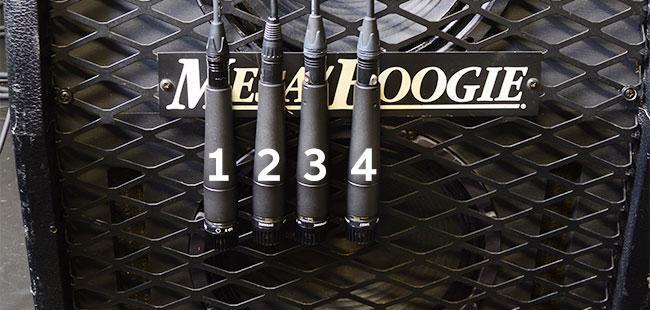
Mic 1
Mic 2
Mic 3
Mic 4
These SM57 mics are cardioids, which means that any bass boost you would get from proximity effect at the front of the mic disappears when you are using it as a side-address (as positioned above). Not only that, but the rear-rejection that comes from using a cardioid (hopefully to keep from picking up drums or other instruments on stage) is defeated, because now the other instruments are 90˚ off-axis instead of 180˚ off-axis. That means that you’ll have more drums and more stage noise in the guitar mic, effectively reducing how much you can turn up the guitar into the main house system. Also, you pick up more reflections from the side of the cabinet and the floor. Here’s an example of how an SM57 sounds when pointing at the floor (Mic 1 below) versus pointing at the speaker cone (Mic 2 below).
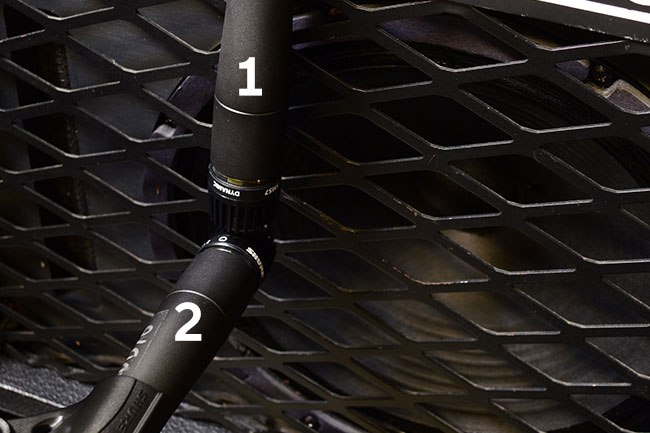
Mic 1
Mic 2
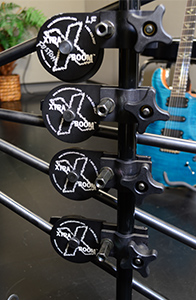
I hope these audio clips help you understand just how important mic positioning is. It’s my hope that the methods I frequently see, such as “just stick it in front of the amp somewhere” or “just hang it from the handle,” will go away. Carefully position your mic for the best tone by buying a mic stand for your guitar mic. A minimal investment (compared to all your other guitar gear) can yield drastic improvements in your tone.
For these multi-mic setups, I used the excellent Latch Lake Xtra Boom, with four arms attached to a single mic stand. This gave me lots of flexibility in mic positioning and a minimum footprint, since all four were supported by a single stand.
If you need a mic, mic stand, or anything to help you create or share your guitar tone, give your Sweetwater Sales Engineer a call at (800) 222-4700.
